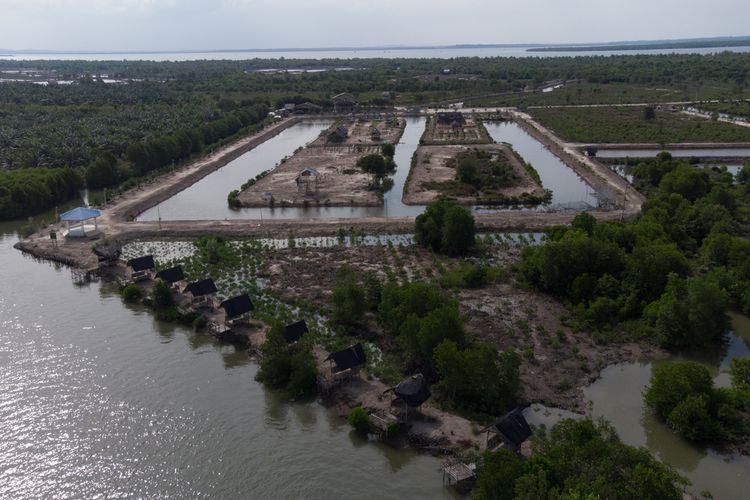This story excerpt was translated from bahasa Indonesia. To read the original story in full, visit Pontianak Post. You may also view the original story on the Rainforest Journalism Fund website. Our website is available in English, Spanish, bahasa Indonesia, French, and Portuguese.

Mangrove cutters want to quit, but it's difficult to find replacement jobs.
A fisherman for over a dozen years, Joni, 29, a resident of Batu Ampar Village, now works hunting mangrove crabs in the mangrove forest. He can earn at least Rp130,000 per day.
Although he feels that this is enough, his heart is always filled with deep anxiety. Lately, he has been complaining that his catch is not as abundant as it was a few years ago. In the past, every time he went out to sea to fish, he could bring home a catch of around 5 kilograms. But now it's getting difficult.
"Indeed, it is not only residents of Batu Ampar Village who look for crabs in the mangrove forest. Residents from neighboring villages also look for crabs in the mangrove forest of Batu Ampar village. In addition, the condition of mangrove forests that have been cut down has also affected the catch," he said to the Pontianak Post at his house in Sungai Limau Hamlet, Batu Ampar, in early August.
Batu Ampar Village is part of Batu Ampar Subdistrict. It is located in the southern part of Kubu Raya Regency. The village is the downstream and estuary of the Kapuas River. The population is around 9,245 people. The occupations of the villagers are divided into several fields such as self-employment, agriculture, and plantations. Then there are about 20 percent of its citizens working as fishermen.

As a nonprofit journalism organization, we depend on your support to fund journalism covering underreported issues around the world. Donate any amount today to become a Pulitzer Center Champion and receive exclusive benefits!












